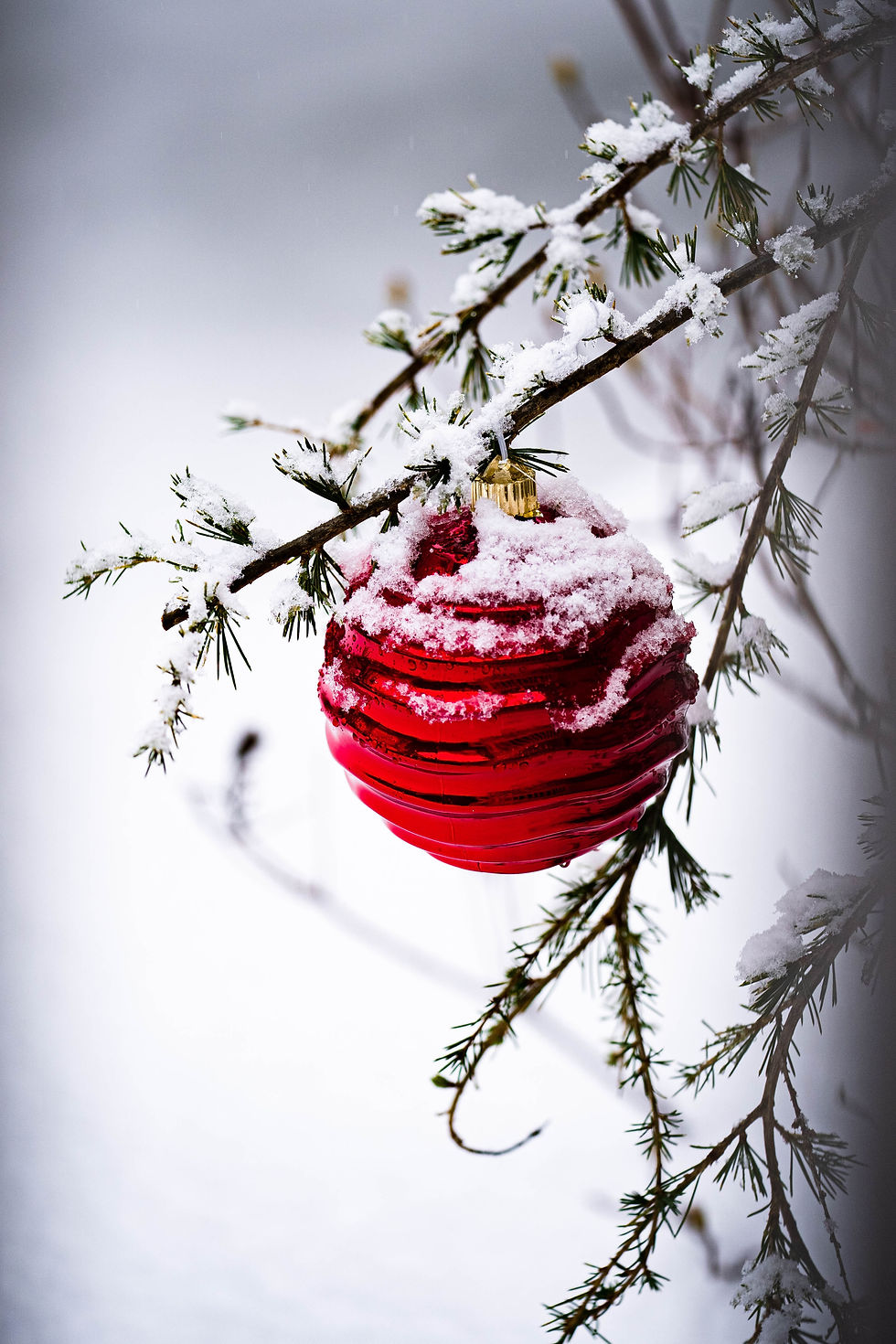The New Yorker on Crocheting for a Cause
- Shidonna Raven

- Aug 12, 2021
- 4 min read
Updated: May 14, 2023
“I’m starting with the base, which is a tree,” the street artist London Kaye said. “Once I get that up, I’ll add all the adorable koalas and goodness and things. I’m excited!” It was a face-numbingly cold early morning on a corner of Wooster and Spring Streets, and the wind cut like a knife, but Kaye, whose medium is crochet, appeared upbeat. With a white cap pulled low over her long blond hair, and wearing a pair of fingerless gloves, she secured a brown swath of crocheted yarn she had made earlier to a chain-link fence across from the SoHo Chanel store. Kaye, who is thirty-one and based in Los Angeles, was in town to install the large-scale sets—multicolor crochet creations attached to a wire-fence backdrop—that she’d made for “Beyond Babel,” a dance performance inspired by “Romeo and Juliet,” which is being put up at Judson Church, off Washington Square. On the plane from L.A., she had lugged an army duffel full of crocheted hearts with her, to hand out to the audience members. “It takes me a minute and a half to make a heart,” she said.
While in town, Kaye decided to undertake another project: a ten-foot-by-eight-foot yarn installation of outback animals encircling a sapling, to raise awareness of the Australian wildfires. “I like making things that have to do with current events, but that also make people happy,” she said, cocking her head to consider the placement of a wool branch she had just tied to the fence. Rummaging in her bag, she unfurled a life-size rust-colored yarn kangaroo. “Look, he’s got a little joey, too!” she said.
Kaye studied classical ballet as a child and learned to crochet as a teen. “When I was in ninth grade, I hurt my back badly, dancing, and that’s when it took off,” she said, attaching a supine gray koala to the fence, then thrusting her hands into her pockets to warm them. “I loved crochet. I’d sell scarves to my friends. I was always the weird girl who would bring yarn to parties.” She went to N.Y.U. on a dance scholarship, and when she graduated she began working at the Apple Store in the meatpacking district. One day, in 2013, the fibre artist Agata Oleksiak, known as Olek—who has yarn-bombed monuments such as the Wall Street bull and the Astor Place Cube—came in to buy a computer. “I thought she looked so cool,” Kaye said. “She had this crazy crochet bag.” After Olek left the store, Kaye reprinted the receipt so she could Google her name later. “That’s what led me to yarn-bombing,” she said. Realizing that her hobby could find a larger canvas, she took a scarf that she’d made—“shocking pink and lime green and fuzzy”—and wrapped it around a tree outside her Bed-Stuy apartment. She kept going, pursuing projects that mixed a dash of twee with a heap of ambition: a thousand yarn hearts tied around Union Square on Valentine’s Day; a giant crocheted Jonas Brother tacked up in Williamsburg during Winter Storm Jonas; an enormous woollen green-pepper pizza slice outside an East Village pizza joint. To every installation, she affixed a card with her Instagram handle.
Soon, companies began approaching her: Kaye has yarn-bombed a school bus for a Gap ad; a Brooklyn Starbucks; fourteen RED Valentino store windows; and a Miller Lite billboard in Times Square. The branded projects allowed her to leave her job at the Apple Store and have given her the freedom to pursue her street art. Even though her creations often get taken down quickly, either by passersby or by property owners, she persists. A few years ago, on the side of a Bushwick building, Kaye installed three enormous crocheted figures—the twins from “The Shining” holding hands with the boy protagonist from Wes Anderson’s “Moonrise Kingdom”—and earned the ire of local activists, who saw the work as a sign of the neighborhood’s creeping gentrification. “It was the wrong piece on the wrong building,” Kaye said. She stood on tippy-toe on a collapsible stool. “These three huge white children. It’s a painful memory, but it was a lesson.” She tugged the top of a koala’s ears over the fence’s jagged edge. “You can stretch and manipulate the yarn in such organic ways,” she said.
A bespectacled woman in a purple felt hat approached the fence, her eyes watery from the cold. “Oh, this is adorable,” she said, taking in the woodland scene. “I tried to learn to crochet recently, because I wanted to make stuff for my baby granddaughter, but I was so bad at it.” She laughed. “The friend who taught me was very patient, but somehow . . . my fingers . . . ” The woman looked down at her hands.
“Once you learn, it becomes so relaxing and meditative,” Kaye said encouragingly. She turned to the fence, her own fingers flying nimbly, fastening a wool leaf atop a wool branch. “Crochet is very forgiving.” ♦
Source: The New Yorker
Image Source: The New Yorker Logo
June 5, 2020
Need 'Cause' ideas? Just ask! What cause have you knitted or crochet for? Why? When?
Share your answers with the community by posting them below. Share the wealth of information with your friends or family by sharing this article with 3 people today. As always you are the best part of what we do. Keep sharing.






Comments